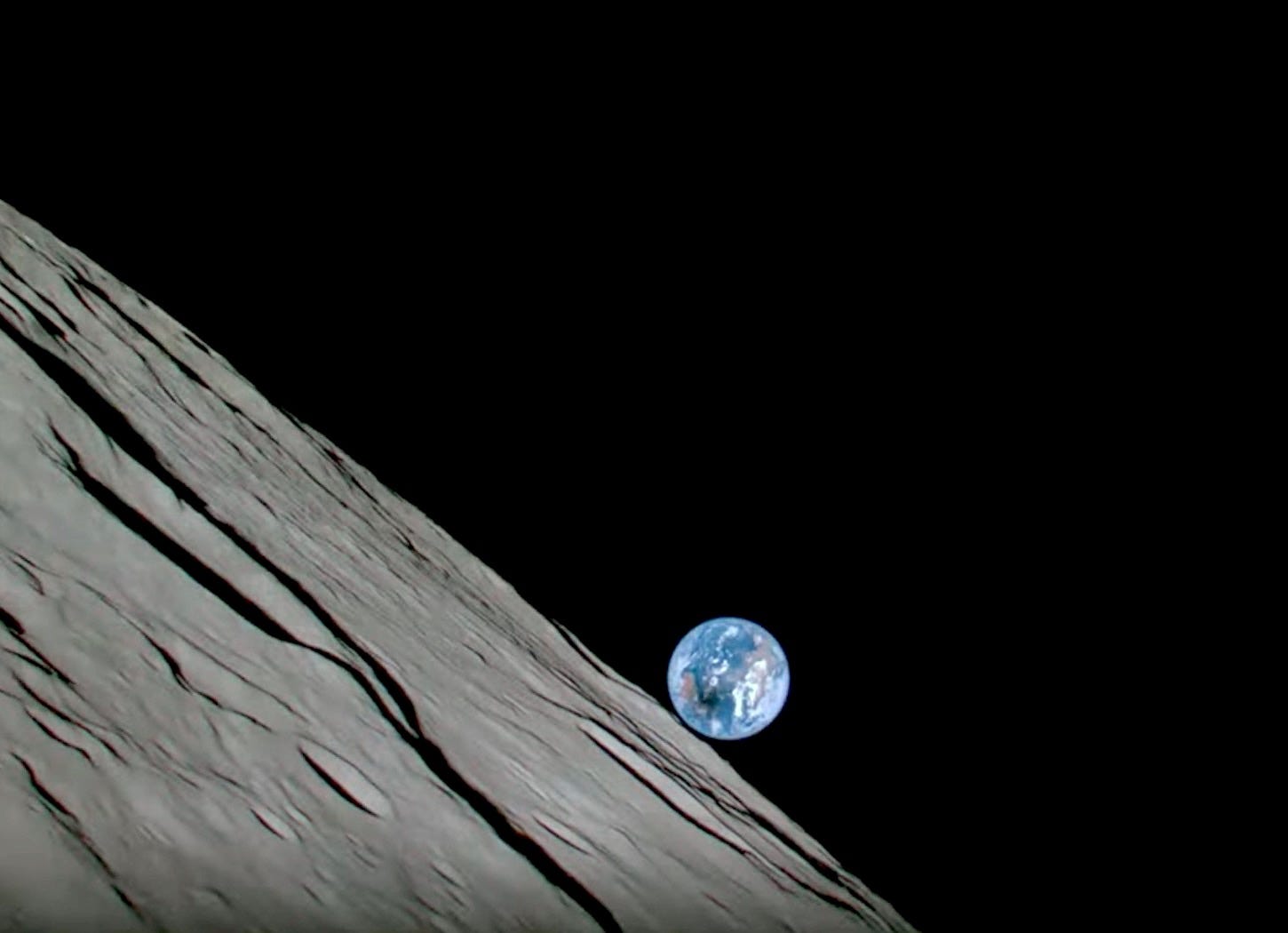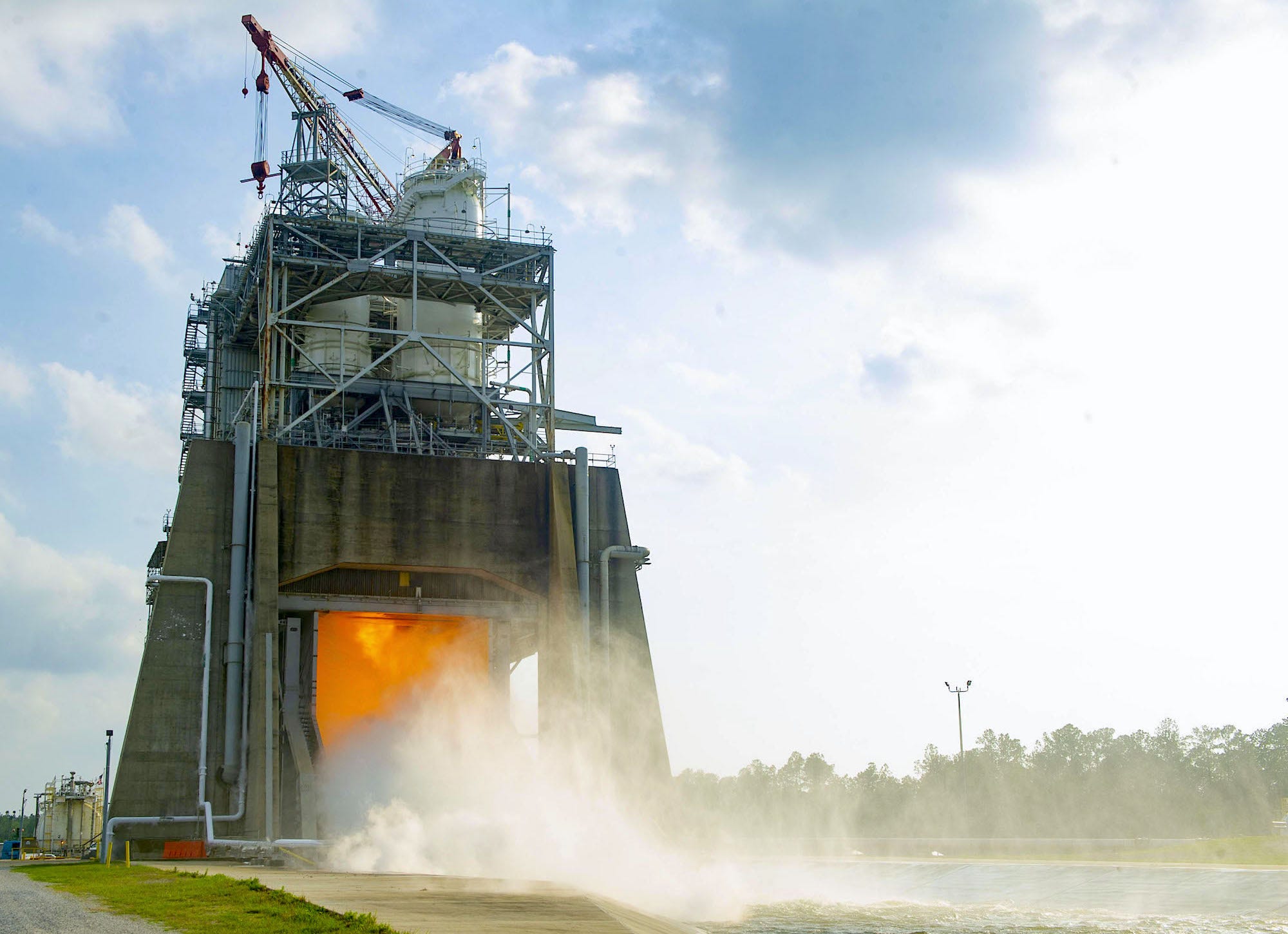Moon Monday #125: ispace Japan’s Moonshot, China’s partnership push, Artemis updates, and more
On ispace’s failed Moon landing attempt and related tangents for NASA’s CLPS craft

On April 25, ispace Japan’s first lunar lander Hakuto-R aced through its remotely-initiated, hour-long autonomous descent on the Moon until the very last moments when it stopped communicating to Earth. ispace said that while the M1 mission lander was upright just before then, it anomalously accelerated because of running out of fuel for engine braking. Communications were lost after this point so ispace thinks the lander crashed on the Moon.
Of course, as with Beresheet—the only prior privately funded lunar landing attempt—we would likely only know the true cause of the mission failure and its extent after ispace engineers conduct detailed telemetry analysis and a failure investigation.
What else was lost to the Moon with M1?
- The UAE’s onboard Rashid rover, which sported three high-resolution cameras from the French space agency, bit the harsh lunar dust. However, the country wasted no time in announcing the successor Rashid 2 rover. The UAE had planned on China’s Chang’e 7 lander launching mid-decade to carry the rover but the partnership is apparently blocked by US export control rules. The UAE could fallback to their original choice of Rashid 2 launching on one of the two Beresheet 2 landers in 2025.
- The lander-hosted JAXA’s novel 250-gram hemispherical rover, NGK’s solid-state battery for better power storage on future Moon missions, and Canadian company Mission Control’s $3-million AI system as a Rashid rover assistant all thus couldn’t carry out their demonstration missions.
- ispace’s lander was supposed to collect lunar soil samples from its footpad and transfer its legal ownership to NASA, a tokenistic move by the space agency intended to set precedence for future resource use under the US-led Artemis Accords. This too naturally couldn’t be completed.
What M1 achieved
On March 21, ispace became the second private entity to have hardware orbit our Moon, following the Israel-based Beresheet lander’s said feat in 2019. The M1 lander spent roughly 100 days in space, most for a private Mooncraft, and about a month in lunar orbit. Based on what we know so far, the nominal performance of the lander’s guidance, navigation, and control algorithms through all but the last phase of descent can certainly be considered a partial success.
ispace also captured some beautiful views of Luna, including one which showed the Moon’s shadow on Earth during the April 20 solar eclipse! As far as I can tell, this is the third time a spacecraft has captured a solar eclipse from the vantage point of our Moon, the first one being from India’s Chandrayaan 1 orbiter followed by NASA’s Lunar Reconnaissance Orbiter.
ispace forges ahead with M2
Scott Moon—who is ispace’s Lead Assembly, Testing, and Integration engineer—said during the M1 landing livestream that ispace has begun building the flight model of the M2 mission lander, and that it remains on track for a 2024 launch. M2 features the same lander hardware design as M1 but one that’s iteratively improved based on lessons from putting together M1. There will be software improvements too, especially based on the lander’s performance during its 100 days in space as well as the insights gained from identifying shortfalls during the descent.
Communications 101 from ispace
It was nice to see the public support ispace received after the failed landing, especially from competitors. But I’d like to take this space to commend the company specifically for being blunt and prompt about the facts in their public communications. It was within merely half an hour of the crashed landing that ispace’s CEO Takeshi Hakamada himself announced and acknowledged M1’s touchdown attempt to be a failure. Even tax-funded government space agencies haven’t been this forthcoming, case in point being the utterly opaque manner in which ISRO handled Chandrayaan 2’s crash landing in 2019. I hope that the US-based private companies sending an armada of landers to the Moon this decade as part of NASA’s CLPS program follow ispace’s example in this regard.
On fuel margins
Before you read further, let me stress that the following commentary isn’t specifically about the fuel margins on ispace’s M1 lander, on which I have no internal knowledge anyway. Having said that, Hakuto-R’s unexpectedly empty tanks make for an ideal time to discuss a widely applicable point for the nascent private lunar industry.
Moon missions from private companies, including the partly NASA-funded CLPS ones, simply don’t have the high budgets afforded by government space agencies. This necessarily implies lesser overall redundancy in their lander designs and thus higher risks. In particular, fuel margins on privately built robotic landers will always be lower because every kilogram of added fuel would take away at least several hundred thousand dollars worth of commercial payload capacity. During the lunar descent, the closer the lander is to the surface the lesser its ability to self-correct, including due to depleting fuel reserves. Again, I’m not implying lack of a higher fuel margin is what failed Hakuto-R but for private entities to sustain their businesses, it’s a tradeoff they have to perpetually consider.

Many thanks to Epsilon3 for sponsoring this week’s Moon Monday.
On China’s push for lunar partnerships with Chang’e 5 and beyond

Andrew Jones reports that China will establish an overarching organization this month to coordinate and manage the construction of the upcoming Sino-Russian long-term joint scientific Moonbase, called the International Lunar Research Station (ILRS). This move is in the context of China looking for international partners to explore the Moon. China and Russia formulated an ILRS Declaration in September 2021 to clarify the project’s principles and how international entities can participate.
To that end on April 25, CNSA signed a joint statement on ILRS cooperation with the Asia-Pacific Space Cooperation Organization, whose members include China, Pakistan, Thailand, Bangladesh, Iran, Mongolia, and Peru. China has previously seen formal interest from the UAE, Brazil, Argentina, and Venezuela. Out of all of these, UAE and Brazil are signatories of the US-led Artemis Accords so it will be notable if either of them proceed with full-fledged collaboration on ILRS. After all, the Chang’e 7 lander was supposed to carry UAE’s second lunar rover but is apparently blocked by US export control rules.
Relatedly, China is leveraging the 1.7 kilograms of volcanic lunar samples the Chang’e 5 mission brought to Earth in December 2020 as a means of forging or enhancing lunar science partnerships. Ling Xin reports that after exchanging 1.5 grams of samples with Russia last year for Soviet Luna 16 ones, last month China gifted France 1.5 grams of Chang’e 5 samples owing to their decades-long cooperation in space.
Xin adds that CNSA has thus far dispatched ~65 grams of Chang’e 5 samples to 100 research groups across China, several of which have international collaborators from the US, many European countries, Japan, and Australia. Moreover, China will begin accepting international applications for soliciting Chang’e 5 samples later this year.
Artemis updates

- On April 26, NASA performed a 720-second hot fire test of the fully redesigned RS-25 engine to be used on future SLS rocket lunar flights starting with Artemis V. This was first test in an ongoing series to demonstrate flight-like gimbaling of the engine, which during a mission helps stabilize the rocket as well as keep it on its intended trajectory. The new RS-25 is built with advanced manufacturing techniques to reduce cost and build time, the former by over 30%.
- Lockheed Martin has awarded a $67 million contract to Aerojet Rocketdyne for supplying the Orion spacecraft’s propulsion systems for Artemis missions VI–VIII. Artemis VIII is also when Orion will feature an upgraded main engine from Aerojet instead of its current Shuttle-era one.
- In a world first, scientists from NASA’s Johnson Space Center have extracted oxygen from simulated lunar soil in a vacuum environment, increasing the technology’s readiness level before eventual use on future Artemis Moon missions. The setup involves a NASA-funded carbothermal reactor made by Sierra Space and a large 4.5-meter wide vacuum chamber. Being built at an accelerated pace as part of NASA’s Game Changing Development program, the agency ultimately intends to demonstrate the system on the Moon via a future CLPS mission, possibly the same one carrying Australia’s first lunar rover in 2026.
More Moon
- Astrobotic has announced its third Moon mission, which aims to have a large robotic Griffin lander launch on a SpaceX Falcon Heavy rocket and touchdown on the Moon’s south pole in 2026. The company’s first two Moon missions have NASA as their primary customer, aiming to deliver CLPS surface payloads this year and the VIPER rover in late 2024. Astrobotic’s third mission is not yet part of CLPS. Jeff Foust reports that Astrobotic is also offering satellite deployments to lunar orbit for the mission, similar to what other CLPS vendors like Intuitive Machines do.
- NASA will work with Venturi Astrolab to build and demonstrate a durable tire for future lunar rovers that can better tolerate the extremely cold temperatures of permanently shadowed regions on the Moon’s poles. This would allow better mobility as well as flexibility in mission planning and operations. Astrolab aims to send a versatile rover to the Moon’s south pole in 2026, and is pitching the same rover’s crewed variant to NASA for the Lunar Terrain Vehicle, which will be used across Artemis missions starting end of decade for at least 10 years.
